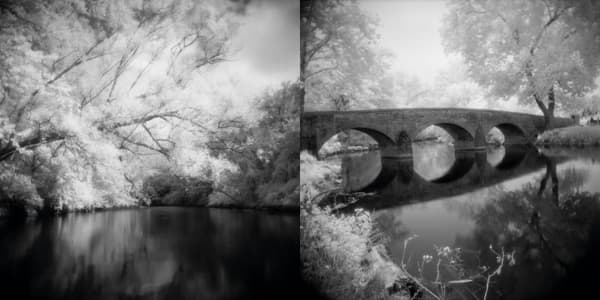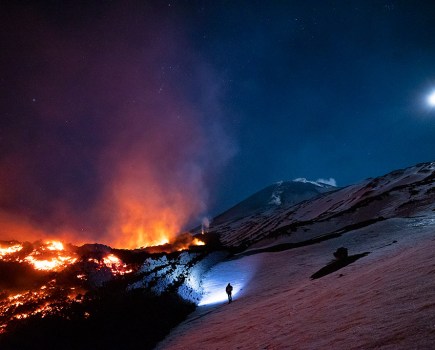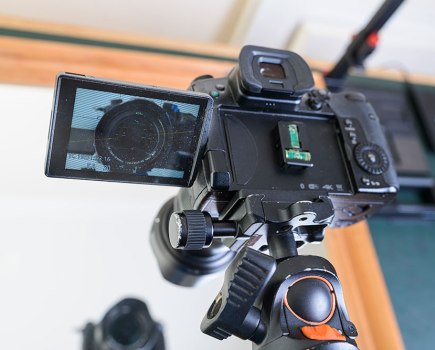Technique Explained: Infrared Film
Silver halides – chloride, bromide and iodide – are by nature sensitive to the short, high-energy wavelengths of light. That is why Victorian pictures can look somewhat gaunt and grim. It was not until dry gelatino-silver bromide plates became available that experiments succeeded in extending sensitivity well into green and yellow and then red.
The increase in speed that became possible with the gelatino/bromide process meant that extending colour sensitivity by building in new sensitisers did not make the emulsions impractically slow. Often photographers would bathe an ordinary plate in a dye to widen colour response.
The terms used are ‘ordinary’ to denote a blue- and slightly green- sensitive emulsion, ‘ortho-chromatic’ for full blue/green sensitivity, and ‘panchromatic’ for one responding across the visible spectrum including red. ‘Orthopanchromatic’ or ‘Recto-panchromatic’ indicates a colour sensitivity matched closely to that of the normal human eye. The distinction is made because panchromatic materials, particularly the faster ones, sometimes have greater red sensitivity than our eyes. That is in order to boost speed in the low colour temperature yellow-red bias of artificial lighting. In portraiture they tend to whiten lips and give pink skin tones.
Beyond the visible red in the spectrum comes infrared (IR). Here begins the region of the electromagnetic spectrum that, no longer perceptible as light, causes the sensation of heat. The longer wavelength radiation excites the molecules of substances, heating them up.
The average eye’s colour range extends across wavelengths from a minimum of a little over 400nm to a maximum of a little below 700nm (a nanometre is one thousand-millionth of a metre). The limit that films specially sensitised to respond to the IR wavelength can record in practice is 900-1,000nm.
The region is normally imaged on black & white film, with the exception of Kodak IR Ektachrome, which seems mainly to be used for special ‘creative’ effects.
The true applications of IR-sensitive films are industrial, technical and scientific, and they are many. Forensics, aerial reconnaissance, medicine, textile testing, biology and photomicrography are only a few that come to mind. Yet to the amateur photographer, it is the unusual tonal values it produces in a print that is the attraction. They have been compared to a moonlight effect.
Special needs

In general, there are a number of special requirements when using IR-sensitive films. Since the eye cannot see by it, we have no means of knowing when infrared radiation is present, so it is best to open the black film container and load the camera in complete darkness. A changing bag may or may not be opaque to infrared light.
The felt on the lips of a 35mm cassette is IR transparent and, if it is present, a length of film may be fogged. Obviously, the same condition applies to unloading the camera. If it is not to be loaded into a developing tank straight away, then it should be returned to its black container. To the best of my knowledge, all modern tanks are opaque to IR, although 30 years ago that could not be taken for granted. Such are the strict conditions of use, though, that you will find photographers who claim to have got away with ignoring them.
The susceptibility to fogging of this type varies with the extent of a film’s IR sensitivity. At the 720nm reach of Ilford’s SFX special effects film, no special precautions are necessary, but liberties should be avoided.
Efke IR 820 Aura film is sensitised to 820nm and should be loaded and unloaded only in very subdued light, preferably in darkness. Standard camera films stay good for a while after their expiry date, depending on how they are stored. IR films, on the other hand, lose sensitivity and speed after their shorter shelf life. They should be processed as soon as possible after exposure as the latent image tends to regress over time.
Any negative developer for black & white film may be used for IR film, though speed-losing developers should be avoided. Ilford Microphen exploits speed and gives good contrast: eight minutes at 20°C is a good start time for experiments. D/76 and ID11 give less speed but finer grain, and a time of nine minutes is suggested. FX-37 and FX-55 give good speed and reasonable grain with a ten minute time, again at 20°C. When fixed, the base is clear and fully transparent, which assists digital scanning or reversing to make slides for projection.
Exposure
When it comes to exposure recommendations, it is difficult to be specific with any IR film. The Efke film is not given an equivalent ISO rating, for two main reasons.
First, it depends on the level of IR in a given subject and lighting, and this cannot be evaluated visually.
Second, it depends on the transmission characteristics of the filter being used, and its relation to the current IR wavelength span and time of day. Efke Aura is basically an ISO 100 film with sensitivity extended from the normal panchromatic 690nm to 820nm. If exposed without a filter to give a modest IR effect, a rating of 64-80 can be used – at least as a trial. Any infrared present will record with or without a filter.
All filters carry a Kodak Wratten number. Kodak bought out the UK Wratten and Wainwright firm a century ago and the numbering is now the industry standard. The deep red filters W25, 29, 70 and 89B were found to drop speed to about ISO 25 equivalent, the more opaque W87 and 88A to about ISO 15 equivalent, and the ‘black’ W87C to about ISO 6 equivalent. These suggestions assume the subject is in sunny conditions.
The following is a brief guide to the general nature of the effect: grass and spring foliage come out very bright in the prints, as does choppy water; blue sky or calm water give very dark print tones; and cloudy sky gives threateningly dramatic contrasts. Electronic flash contains IR, so exposures can be made with an IR filter covering the window. It does not have to be of camera lens quality, and can be obtained from Lee Filters (visit www.leefilters.com or call 01264 366 245).

Focusing
Finally, there is the focusing. General photographic lenses – monofocals and zooms – are not colour corrected for infrared light. The more expensive ones, and those termed ‘Apo’, are likely to be better corrected for deep red, but go no further. It used to be the practice to put an IR focus index against the distance scale and it may still occasionally be there on monofocals. Infrared is brought to focus further from the lens than the visible spectrum. Some users make a small deviation from the visual focus position by extending the lens a millimetre or so, but, again, experimentation is the only sure guide.
Otherwise, stop down to gain depth of field, although this leads to long shutter times on what is already a slow film. Obviously, when using visually opaque filters, it is necessary to set up the shot before attaching the filter, so a tripod will usually be required.
If this report leaves you thinking that IR photography is a chancy exercise, then you’re right – at least, to begin with. It does not take too many rolls to establish a firm basis for the future. Making test strips of bracketed exposures with different filters can shorten the learning curve greatly, and the results will make it all worthwhile. Readers who are familiar with Maco IR820 will find that Aura behaves identically. The best book on the subject for the IR devotee, is Infra-Red Photography: A Complete Workshop Guide by Hugh Milsom (Fountain Press, £15.99, ISBN 978-0863433733).
Putting it in practice
‘I began shooting with Efke IR 820 Aura in the late winter of 2007, when it first became available in medium format here in the USA. I had been shooting Kodak HIE in 35mm format for a long time, but had always wished I could shoot a medium-format IR film in a Holga camera.
‘Unlike HIE, for best results you need to shoot Efke film with a true IR filter. I use a Hoya R72. With this combo the film is quite slow and requires a tripod, but as I have always been interested in shooting long exposures, this works well for me.
‘I develop the film with either Diafine or Rodinal, and rate the film at ISO 100 when using the R72 filter, so, following the Sunny 16 rule, that means 1sec at f/16 in bright sunlight.
Over the past few years I have shot many hundreds of rolls of Efke Aura and it has become my favourite film. Alongside its IR effects, I really like the tonality that it produces.’ Wallace Billingham








